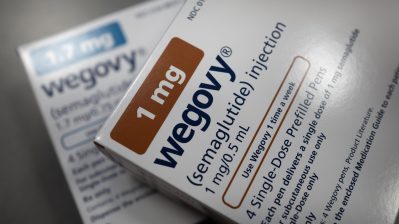Health-care deal just a start for GM
TEXT OF STORY
KAI RYSSDAL: The GM-UAW strike is one of those stories where it’s gonna take a while for the dust to settle. Yes, we know some of the details…the key one being something called a Voluntary Employee Benefit Association or VEBA — a trust fund that’ll cover employee and retiree health care benefits.
GM gets to erase tens of billions of dollars of liability from its books. But Marketplace’s Alisa Roth explains, that still might not be enough.
ALISA ROTH: General Motors will put money — probably a combination of cash and stocks — into a trust fund. The VEBA will pay the health-care benefits for active employees, retirees and their families. The union will be responsible for the fund.
It’s a chance for GM to write more than $50 billion in liabilities off its books. And for the workers? Steven Ferruggia develops similar funds at Buck Consultants:
STEVEN FERRUGGIA: What they receive is a reduction of the threat of bankruptcy and a wholesale termination of benefits in bankruptcy. What they have is assets, and that gives some greater security to participants.
The risk, of course, is that the fund runs out of money, or that health care costs go up faster than people expect. The trust fund is supposed to be solvent for 80 years — presumably long enough for all current and retired workers to collect benefits for the rest of their lives. But Ferruggia points out that it’s hard to project health-care costs decades into the future:
FERRUGGIA: The union rank-and-file still have to ratify the contract. If it’s approved, the GM-UAW fund will be the biggest VEBA ever.
Ferruggia says its size means GM’s fund is less likely to fail. The large population makes it easier to predict usage and cost, and the amount of money in it means more room for elaborate investing of assets.
BRETT HOSLETON: Just because GM and the UAW have agreed to a trust fund doesn’t mean everything’s hunky-dory.
Brett Hosleton follows the auto industry for Key Banc Capital Markets.
HOSLETON: This is not the entire answer to GM’s problems. I mean, what we’re really trying to do is we’re trying to look at GM’s labor costs — wages and benefits combined — and trying to bring those in line with its competitors: Toyota, Nissan and Honda.
Right now, building a car costs GM around $25 more an hour than its foreign competition. This health-care agreement would cut that gap to about $15. The two sides also agreed to a two-tiered wage system: New employees will be paid less than current ones, which will also help GM.
But Hosleton says the real key is for GM to build cars that consumers want to buy.
In New York, I’m Alisa Roth for Marketplace.
There’s a lot happening in the world. Through it all, Marketplace is here for you.
You rely on Marketplace to break down the world’s events and tell you how it affects you in a fact-based, approachable way. We rely on your financial support to keep making that possible.
Your donation today powers the independent journalism that you rely on. For just $5/month, you can help sustain Marketplace so we can keep reporting on the things that matter to you.


















